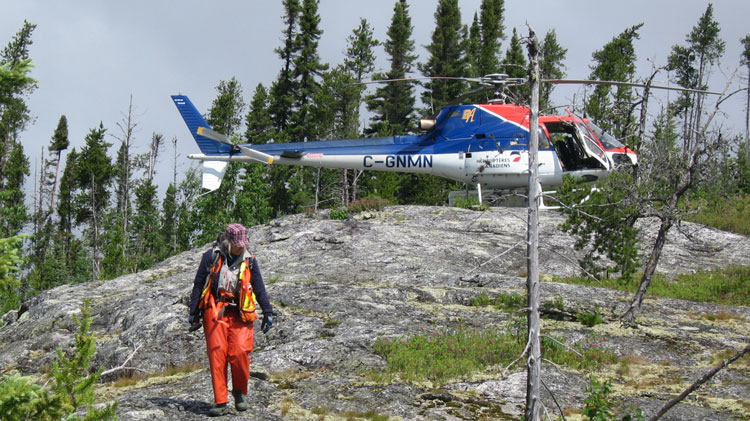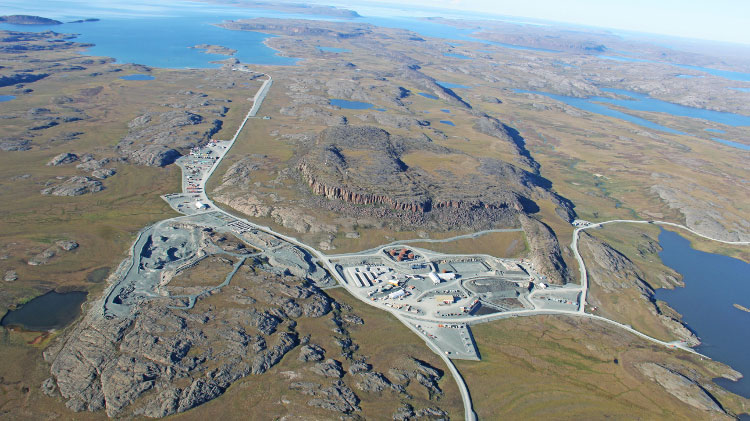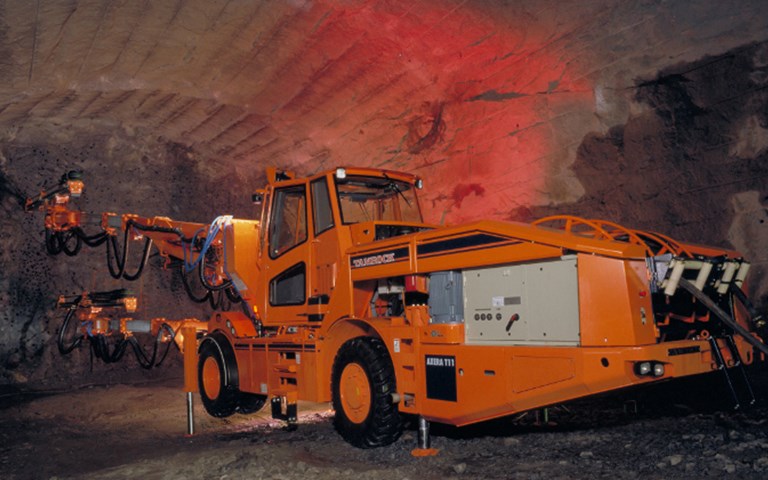Rio Tinto’s CaveCad data management system is in use at Oyu Tolgoi in Mongolia, and will allow data to be compared across the company’s portfolio of cave mines | Courtesy of Rio Tinto
Up until 2010, Rio Tinto handled cave management data from its cave mines as most mining companies do: by leaving the system and method for data collection and analysis up to individual operations. That meant each mine stored data in multiple, and often unconnected, databases and spreadsheets, which were analyzed as needed by engineers using a variety of software for specific purposes. The way each operation did this varied widely, and sharing data across operations, even though Rio Tinto is one of the most experienced cave mining companies in the world, was difficult at best.
“Data has traditionally been gathered in what amounts to silos,” says John McGaughey, president of Mira Geoscience Ltd., a Montreal-based company that specializes in multidisciplinary three-dimensional (3D) modelling and data management technology for the mining industry. “Production data has been used by people looking at production statistics. Other data has been used by engineers responsible for mine stability, geology data by geologists, and rock quality data by geotechnical specialists for initial design purposes.”
Without an intuitive way to track data, it can get lost easily if key users retire or change roles. “Typical databases evolve over time, and how well a database is preserved and maintained is dependent on the skills of the people at the mine at any given time,” says Andre van As, chief advisor of geotechnical engineering at Rio Tinto’s Underground Technology Centre in Australia. “If you have turnover of staff, which mines typically do, continuity and consistency becomes challenging.”
Van As is aiming to tackle these issues as head of Rio Tinto’s CaveCad project – the development of an integrated cave management system that connects all of the data emerging from Rio Tinto’s geotechnical monitoring, analysis and reporting tools in all of its existing and planned cave mines.
“The focus of the new software is very much on mines in development and production, hence the collection and reporting of tunnelling and production performance statistics,” says Mathijs Mol, a mining engineer at the Rio Tinto Underground Technology Centre and part of the team developing and implementing CaveCad. While CaveCad continues to mature, Rio Tinto has already introduced the system in five of its mines, including its Northparkes copper mine and Argyle diamond mine in Australia, along with the Palabora copper mine in South Africa, which it recently sold. CaveCad is also in use at the Oyu Tolgoi copper and gold mine in Mongolia, and the Resolution copper mine in Arizona.
Modelling and analysis demand quality
“The rationale for bringing all of this different data together to do more advanced analysis seems like common sense, but for practical and technical reasons, it’s been difficult,” says McGaughey, who has been working with Rio Tinto on CaveCad. “As well, I think the need for this type of data management wasn’t recognized so much in the past because the analytical tools weren’t that sophisticated. With more sophistication in modelling and analysis technology has come a demand for more sophistication in data management.”
Rio Tinto’s new system began with engineers at the company’s Underground Technology Centre exploring the capabilities of such off-the-shelf software as Mira’s Gocad Mining Suite (a mining-customized extension to the Paradigm Gocad petroleum-industry modelling engine), which can build integrated multidisciplinary 3D earth models. “We decided we wanted to look at what else we could do with it,” says Mol. Their efforts led to the development of even more sophisticated 3D models – and the new CaveCad system. “Currently, we can access an SQL database from within the Gocad environment and can query different types of data and select specific periods in time and create Gocad objects from those, which wasn’t possible before,” says Mol.
Cross-platform development
Rio Tinto turned to Mira Geoscience for its integration and customization expertise. “We’ve used off-the-shelf components but we’ve also created a fair amount of software within the [CaveCad] project,” says McGaughey. “The heart of CaveCad is a relational database, and that has been implemented in Microsoft SQL server, but the database application had to be custom written.”
The two main off-the-shelf components are Gocad, used for 3D visualization, and Jaspersoft, an application environment that provides tools for generating reports from a database. The system’s main application interface is a web browser with a combination of custom-written components and Jaspersoft tools, including report archiving, formatting, scheduling and the ability to dispatch the reports to selected individuals or company departments. The system also has real-time Trigger Action Response Plans (TARPs) in the form of geohazard maps that alert site personnel of required responses to abnormal deviations in mine conditions and are kept up to date with real-time data. In fact, CaveCad is constantly being fed drawpoint observation data, such as fragmentation size distribution, geology, percentage fines, grade, and moisture content, much of which is gathered automatically with instrumentation on the site.
“The data comes into the system as it is collected. In some cases it can be once a week, for example, while in others it’s every five minutes, or virtually real time,” says Mol.
CaveCad provides a central location that can tap into all the database sources. “It brings the essential data from each of those different systems into one single data repository for the purposes of geotechnical management of the operation. This allows for different kinds of analysis on the data for advanced understanding of the evolution of different geotechnical risks in the mine that otherwise you wouldn’t be able to do,” says McGaughey. For example, because the geohazard map component monitors and records water, clay and fines proportions and is linked to a mine’s production and seismic systems, it empowers the mine’s personnel with sophisticated mud rush risk mitigation capabilities.
Trial by fire
“We’re now trying to centralize and standardize across the entire group, which is not easy given we are a big multinational company with different people, mines, countries and products,” says van As. “But if we have new people coming in, they don’t have to relearn anything or search for the data. It will all be at their fingertips. By centralizing, we’re also safeguarding the data and making sure it’s not lost and that it’s on the same format across the board. And from a benchmarking perspective, we can now measure apples against apples at different mines as well. With CaveCad, all our metrics will be consistent.”
And all of this is for a relatively small cost, with most of it devoted to the development of the system. “It hasn’t cost us very much at all,” says van As. “We’re taking off-the-shelf products and customizing them to suit us.”
But low cost does not indicate a small achievement. “It was pretty challenging actually gathering detailed scopes of work which would be appropriate for all the different mines,” says Mol. “We have it running at copper mines and diamond mines, and some of it is only appropriate for one or another. Take sample grades: for copper, you can get samples pretty easily and have them back from a lab within a week or so, but that’s not the case for diamonds. We try to keep it as generic as possible, but it will always need some degree of customization for each mine.”
The system continues to be a project in development and is still in Phase 1. CaveCad will continue to improve and evolve in its capabilities, which are ultimately about improving employees’ ability to make the best possible decisions.
“Because it is all integrated and you can get the data automatically, it bypasses a lot of manual errors and it allows engineers to look at the results of the data much faster than taking a week to process it,” says van As. “What we’re trying for is engineers being able to spend time being engineers, rather than spending three-quarters of their time collecting and processing the data.”




